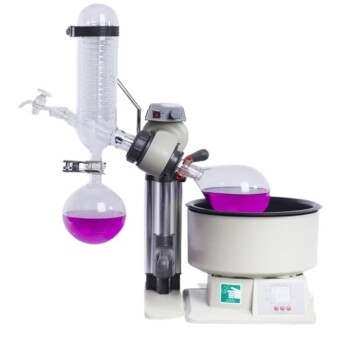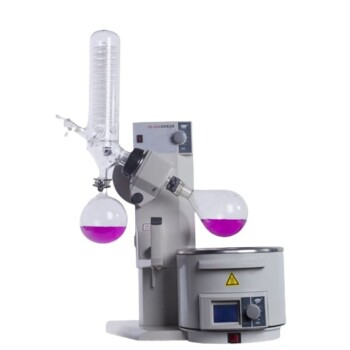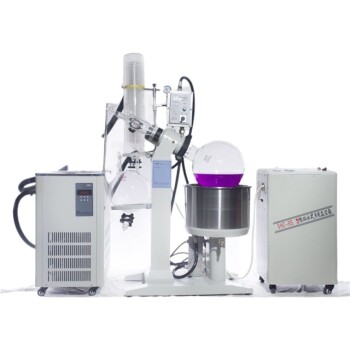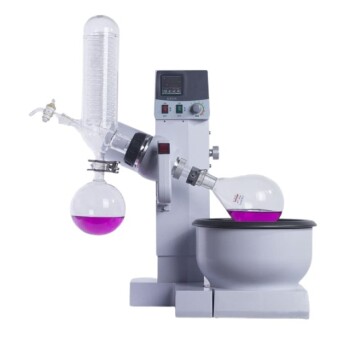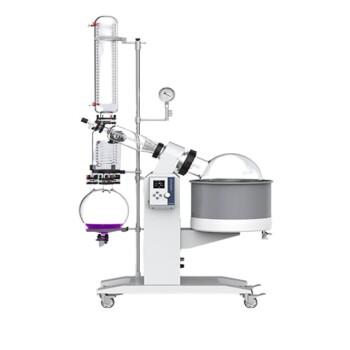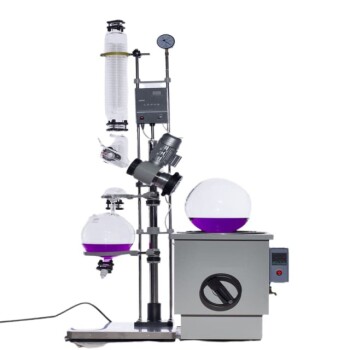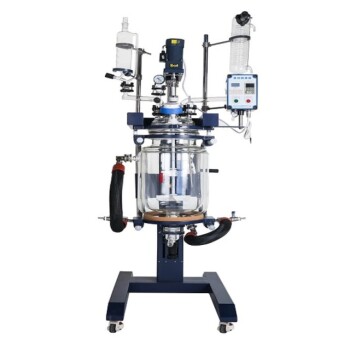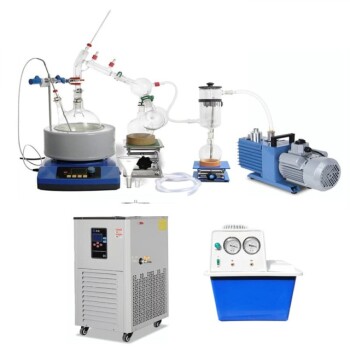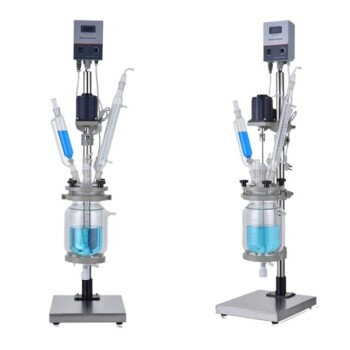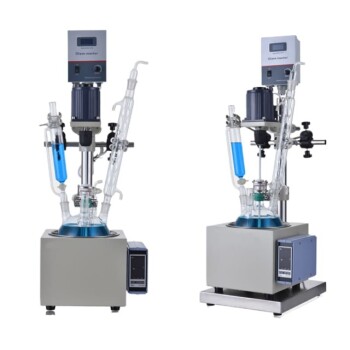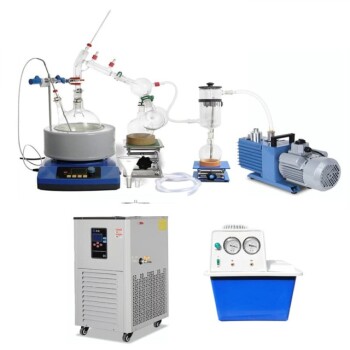When using a rotary evaporator, it is crucial to follow safety precautions to prevent accidents, injuries, and equipment damage. Key measures include avoiding entanglement with rotating parts, wearing appropriate personal protective equipment (PPE), handling glassware carefully, and managing air-reactive materials and solvents properly. Additionally, ensuring proper setup, operation, and maintenance of the equipment, such as filling the heating tank with water, applying vacuum grease, and conducting simulation tests, is essential. Proper disposal of solvents and adherence to ventilation protocols further enhance safety. By following these precautions, users can minimize risks and ensure efficient and safe operation of the rotary evaporator.
Key Points Explained:

-
Avoiding Entanglement with Rotating Parts:
- Loose clothing, hair, necklaces, or jewelry can get caught in the rotating parts of the rotary evaporator, leading to serious injuries, burns, or chemical exposure.
- Always secure loose items and maintain a safe distance from the rotating components during operation.
-
Wearing Personal Protective Equipment (PPE):
- PPE such as gloves, goggles, and lab coats should be worn to protect against chemical splashes, burns, and glass breakage.
- This is especially important when handling hot oils, glassware, or volatile solvents.
-
Handling Air-Reactive Materials Under Vacuum:
- Air-reactive materials can cause violent reactions if air enters the apparatus due to leaks.
- Ensure the system is properly sealed and use secondary traps (e.g., liquid nitrogen or dry-ice condensers) for added safety when working with corrosive or reactive substances.
-
Proper Setup and Maintenance:
- Fill the heating tank with water before turning on the power to prevent dry burning.
- Apply vacuum grease to the grinding instrument to ensure a proper seal and prevent leaks.
- Conduct a simulation test to verify the system's integrity before running actual experiments.
-
Managing Solvents and Vapors:
- Use a fume hood or scrubber to manage solvent vapors, especially when disassembling the equipment.
- Avoid inhaling chlorinated solvents or acids, and ensure volatile solvents are condensed into traps.
- Empty the solvent collection flask to prevent mixing incompatible chemicals.
-
Controlling Rotation Speed and Vacuum:
- Adjust the rotation speed of the flask using the monitor to prevent splashing or bumping.
- Manage the vacuum and stopcock to vent the system after solvent discharge, ensuring safe pressure release.
-
Temperature and Condenser Management:
- Keep the water bath temperature below the solvent's boiling point to avoid overheating.
- Use liquid nitrogen or dry-ice condensers for volatile solvents to ensure efficient condensation and prevent contamination.
-
Post-Operation Safety:
- Release the vacuum and stop the spinning after evaporation to safely disassemble the equipment.
- Clean the bump trap and empty the receiving flask to prepare for the next use.
- Turn off all switches and unplug the power at the end of the work session.
-
Proper Disposal of Chemicals:
- Follow appropriate disposal procedures for solvents and other liquids to prevent environmental contamination and ensure lab safety.
By adhering to these precautions, users can operate rotary evaporators safely and effectively, minimizing risks and ensuring successful outcomes in their experiments.
Summary Table:
| Safety Measure | Key Actions |
|---|---|
| Avoiding Entanglement | Secure loose items, maintain distance from rotating parts. |
| Wearing PPE | Use gloves, goggles, and lab coats for protection. |
| Handling Air-Reactive Materials | Seal the system, use secondary traps for reactive substances. |
| Proper Setup & Maintenance | Fill the heating tank, apply vacuum grease, conduct simulation tests. |
| Managing Solvents & Vapors | Use fume hoods, avoid inhaling harmful vapors, empty solvent flasks. |
| Controlling Rotation & Vacuum | Adjust rotation speed, manage vacuum to prevent splashing or pressure issues. |
| Temperature & Condenser Management | Keep water bath temperature below solvent boiling point, use condensers. |
| Post-Operation Safety | Release vacuum, clean equipment, turn off switches, and unplug power. |
| Chemical Disposal | Follow proper disposal procedures for solvents and liquids. |
Ensure your lab's safety with expert guidance—contact us today for more tips on rotary evaporator use!
